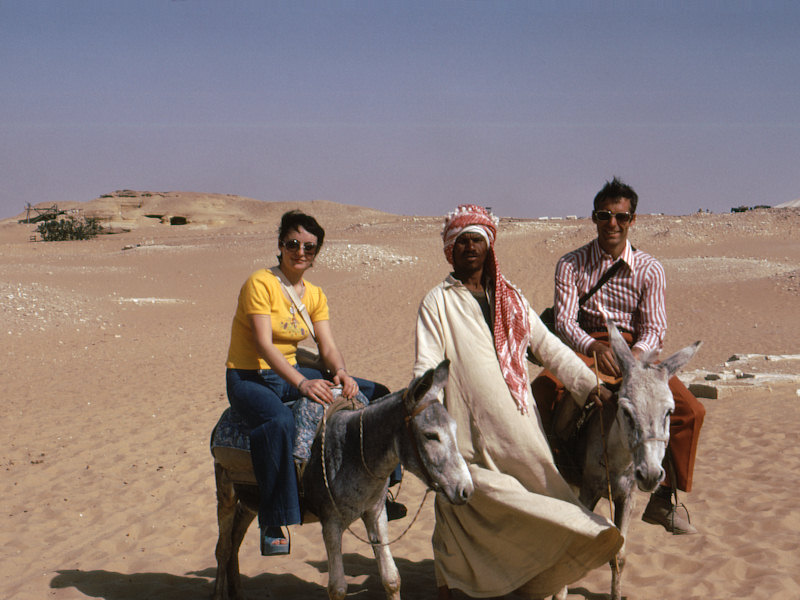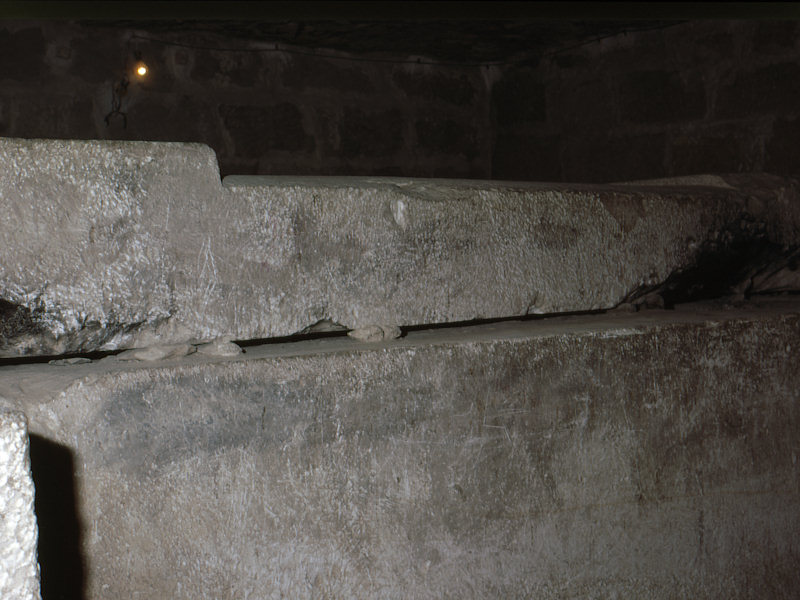Photo
album: "Memphis, Al Fayyum"
Fly
over a photo with the mouse to enlarge it
Click
on a photo to open it in a new window
After
leaving the site of Giza, on Sunday, March 30, 1975, we go to Memphis, the
ancient capital of Lower Egypt which was founded about 3000 BC, where we visit
the necropolis of Saqqara. The next day, Monday, March 31 we visit synagogues in
Cairo and the Mosque of Muhammad Ali. In the evening we meet my comrade from
GRI, Jean-Yves Kerguelen Delahaye who left at the end of the ARAKS campaign to
go back to France and has returned to a trip in Egypt with his wife Mireille. We
have dinner together and organize for Wednesday, April 2, a visit to the oasis
of Al Fayyum. Later our programs will diverge and we will not have the
opportunity to meet again before our return to France. Tuesday, April 1,
Marie-France and I stroll in Cairo and are planning a trip to the south of
Egypt.
 |
Colossus of Ramses II, stone
sculpture carved in limestone, it is about 10 m long. As it lacks the
feet, the statue could not be erected. Muhammad Ali donated the statue to
the British Museum, but the task to transport it being too difficult, it
has remained in the archaeological zone of Memphis in the shelter built to
protect it. |
 |
Focus on the head of the statue of
Ramses II.
|
 |
Sphinx in alabaster, its weight is
estimated at about 80 tons. |
 |
A palm grove view from the Memphis
site. |
 |
Saqqarah is a vast necropolis in
the Memphis area. As early as the first dynasties, the kings had their
Mastaba built there and this is where the first pyramid was built by
architect Imhotep: the Step Pyramid of Djoser Pharaoh (III dynasty). Its
construction began around 2600 BC. It measures 62 meters high and its base
is 121 m by 109 m. |
 |
General view of the site of
Saqqara. |
 |
Old unfinished pyramid (of
Sekhemkhet?) on the site of Saqqara. |
 |
Hieroglyphs within a mastaba. |
 |
Columns of the Corridor views from
the southern courtyard of the funerary complex of Djoser. |
 |
The desert around the site of
Saqqara. |
 |
To move around, on this site, we
have changed mounts. We are much closer to the ground on these little
donkeys than on camels. We are, even, a little ashamed to make them wear
our weight. |
 |
A tomb stone which must have
contained a sarcophagus, inside a burial chamber. |
 |
On Monday, March 31 we visit the
Mosque of Muhammad Ali in Cairo. |
 |
The minaret of the mosque.
|
 |
Inside the mosque. |
 |
The domed ceiling inside the
mosque. |
 |
On Wednesday, April 2, with
Jean-Yves and Mireille Delahaye, we hired a taxi for the day to visit the
oasis of Al Fayyum located a hundred kilometers south of Cairo. On the
road to Al Fayyum, we stop to visit the ruins of an ancient Greco-Roman
city. |
 |
General view of the ruins of the
ancient city. |
 |
The city of Al Fayyum is built near
the great lake Qarun. The Al Fayyum area, very fertile, is irrigated by
the Nile through many channels built originally by the pharaohs of the XII
dynasty. Here we see the paddle wheels, driven by the current of a main
channel, it permits to take some of its water to pour into smaller canals
for irrigation. |
 |
A merchant outside a shop. In the
background the town of Al Fayyum and its many mosques. |
 |
Outside the town, a brick factory. |
 |
We follow our guides in a hollow
way. |
 |
A mill wherein the grinding stone
which crush the grain are driven in rotation by the flow of water. |
 |
The road in the desert on the way
back to Cairo. |
Go
back
.
.
.
.
.
.
.




















